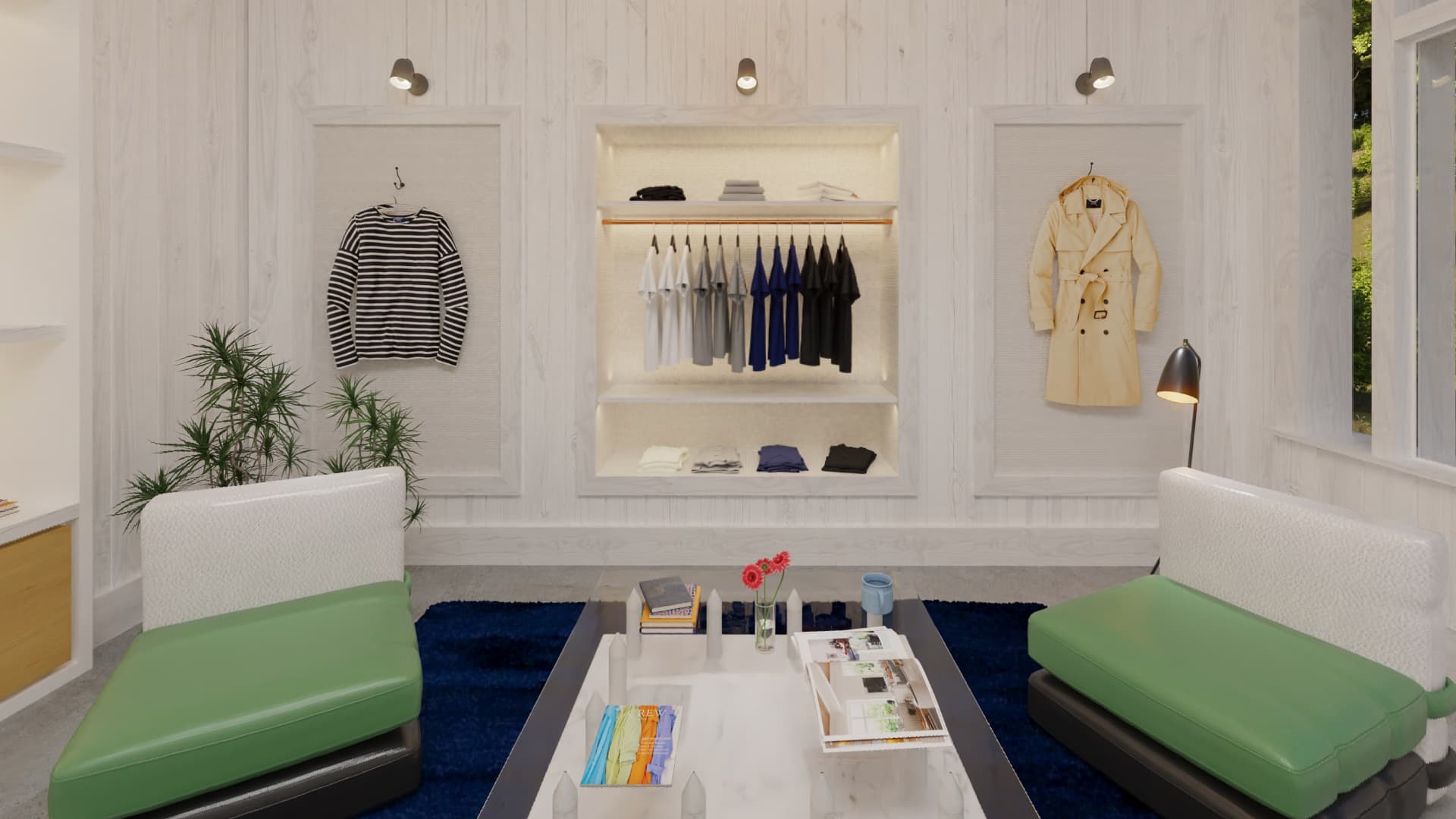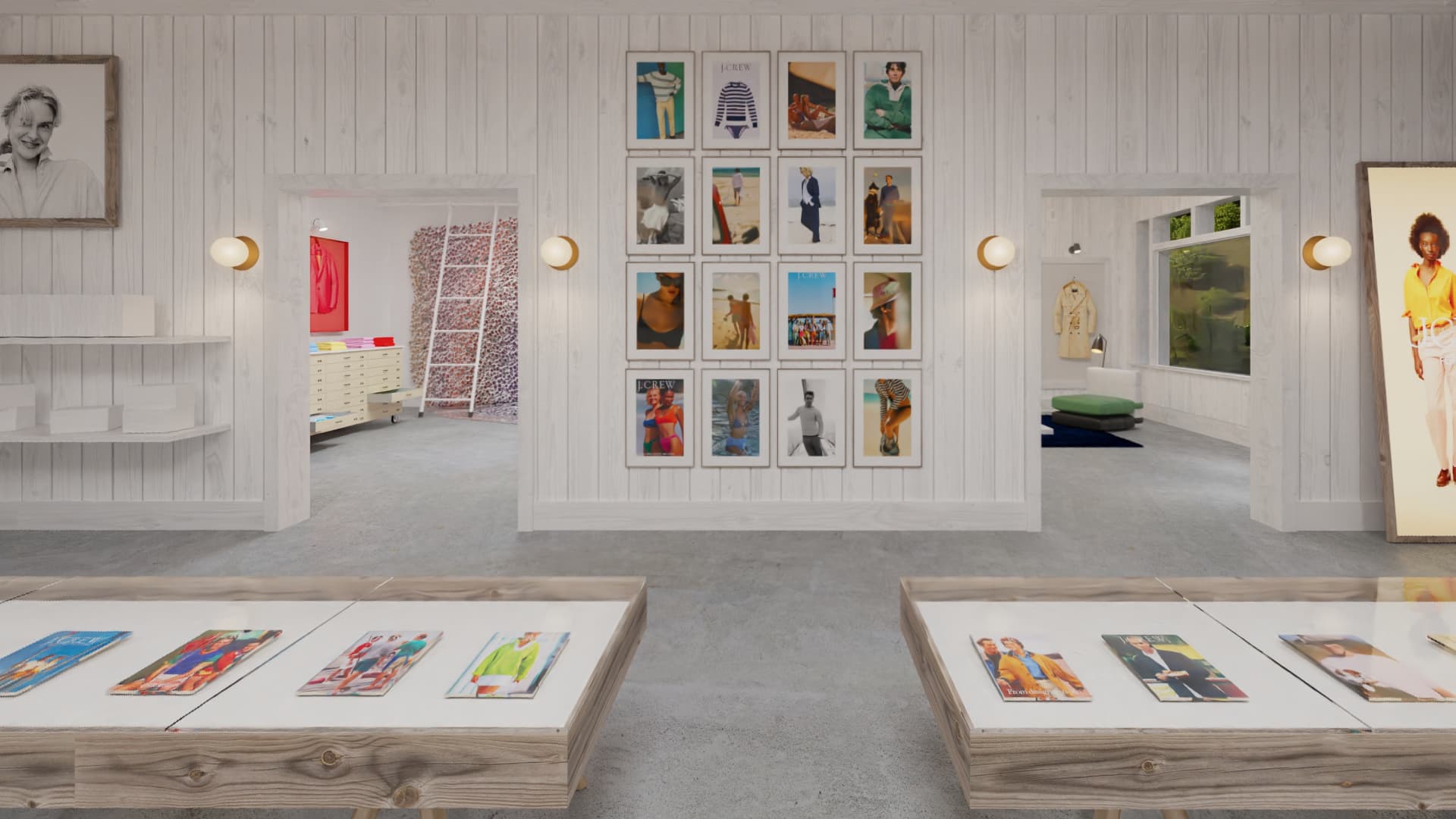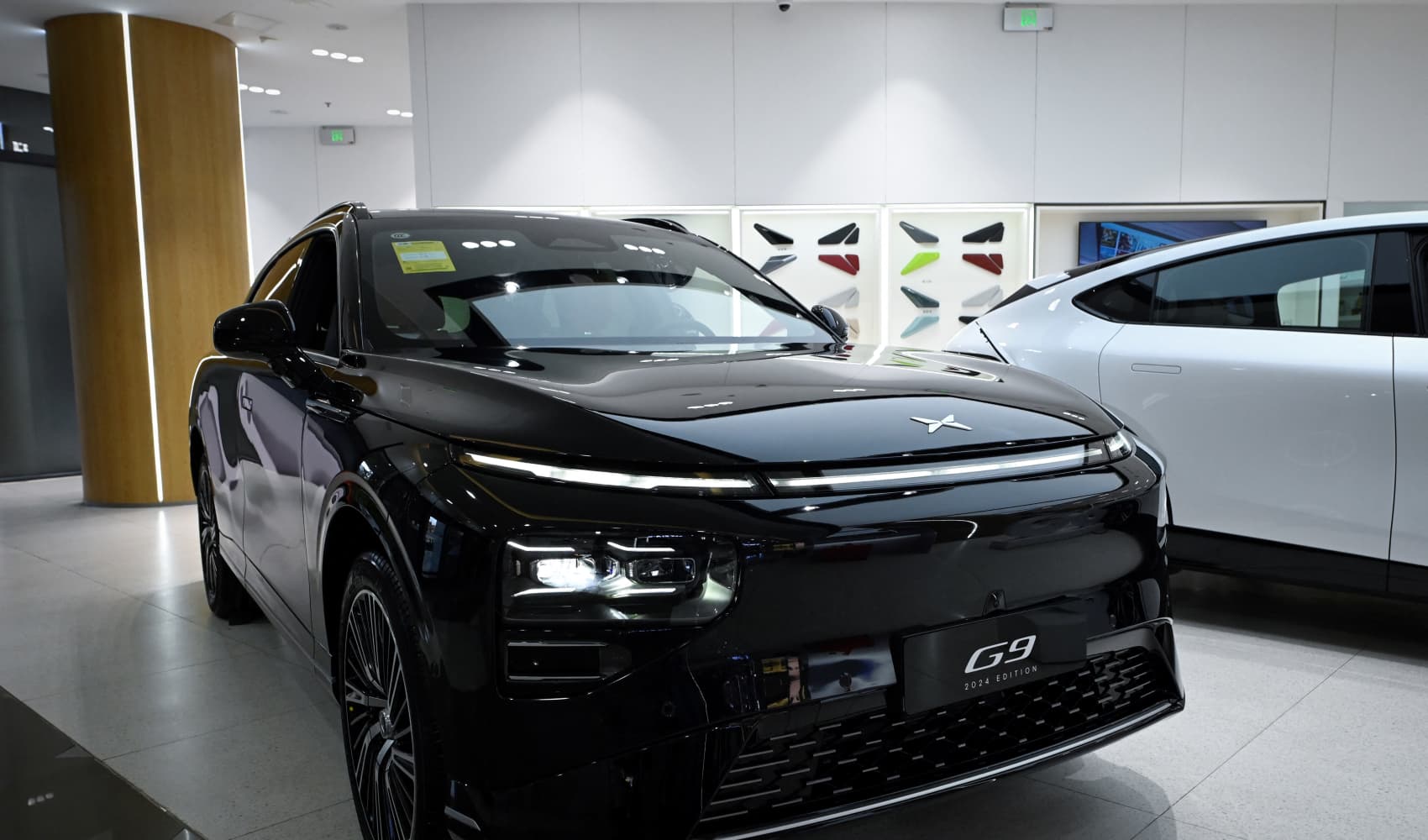
- J. Crew is launching a virtual beach house in celebration of its 40th anniversary with experiential e-commerce platform Obsess.
- Virtual storefronts are on the rise, and Obsess has built platforms for a slew of other retailers and brands, including American Girl, Ralph Lauren, Corona, Crocs, Coach, Dior and Mattel.
- The interface, which often includes games and scavenger hunts, leads to better conversions and boosts engagement, according to Obsess.
In a brown shingled beach house tucked behind stalks of reed grass, J. Crew customers encounter a new shopping experience.
Just beyond a set of wood steps and a wraparound porch, shoppers can explore a series of white-paneled rooms, a boathouse and a secret lighthouse that highlight the brand's history and some of its most popular apparel.
Inside the rooms, shoppers can browse barn jackets, rollneck sweaters and rugby shirts. Outside on the porch, bathing suits are displayed on a clothesline.
Get New England news, weather forecasts and entertainment stories to your inbox. Sign up for NECN newsletters.
While customers can select and purchase items as they would in any J. Crew store, the beach house comes with one key difference: It's entirely virtual.
To mark J. Crew's 40th anniversary, the brand is launching its first immersive shopping experience Friday with e-commerce platform Obsess, which creates 3D, virtual stores for retailers that customers can access from their phones or laptops.
Derek Yarbrough, the chief marketing officer of J. Crew and Madewell, told CNBC the company is planning a series of events to celebrate the brand's anniversary. But they tend to be in places such as New York and Los Angeles, which limits the number of people who can attend, he said.
"With Obsess, we were really looking to have an exciting activation that we could execute for a larger audience and reach more of the people who love the brand in a bigger way," Yarbrough said in an interview. "We really wanted this to be a passport to explore the world of J. Crew ... and as the team brainstormed on it, it was a little bit of a no-brainer to take the form of a beach house."

Obsess was launched in 2017 by its CEO, Neha Singh, a former Google software engineer. It aims to transform traditional online shopping into something more immersive, so shoppers remain engaged rather than lose interest as they endlessly scroll for their next purchase.
Money Report
In Obsess' virtual storefronts, customers can create their own avatars. Depending on the retailer, they can also play games that can unlock more content, promotions or other bonuses that keep them in the virtual stores for longer, the company said.
"What our platform does is it enables brands to create that much richer and more immersive digital experience that borrows the interface from gaming," said Singh. "Today, the experience is so generic. Other than font and color, there's really no differentiation between brands' digital presence, but their physical retail presence is so different. So how can we bring some of those elements into online?"
Virtual storefronts on the rise
Many retailers saw the metaverse, a virtual world that offered another possible platform to sell products, as the hot new technology throughout last year. Many of those same companies have now largely forgotten it, as strides in artificial intelligence have surged to the top of business leaders' minds a year later.
While the metaverse may be dead — for now — virtual storefronts are growing. Obsess is now powering more than 200 virtual stores that tens of millions of shoppers have visited and bought products in.
The company's clients include American Girl, Elizabeth Arden, Dior, Ralph Lauren, Corona, Laneige, Crocs, Coach, Mattel, Maybelline, Johnson & Johnson and even NBCUniversal, among others.
The virtual storefronts allow retailers to bring a version of the metaverse to their customers, without the need for pricey headgear or other steep barriers to entry.

"Technology never stops, and it's going to keep progressing, but it has to be something that's user-friendly, right? And parts of [the metaverse] are not user-friendly yet," said Singh. "We launched the company before metaverse was a buzzy topic, and it really was just about: How can we use the latest technology to actually create a better customer experience?"
When e-commerce was born in the 1990s, Amazon led the way in its online bookstore, which featured a white background and icons of books with text describing them.
Since then, little has changed when it comes to the basic interface of online shopping.
"If you think about e-commerce, the typical sort of interface today, it's a grid of thumbnails on a white background; whether you're shopping for fashion, or beauty or home, it's really all the same," Singh said. "The interface looks like a database that really hasn't changed in 25 years [since] it was first created."
Gamifying shopping, boosting engagement
Shoppers headed to J. Crew's virtual store can access a series of interactive games, including a scavenger hunt and a quiz on catalog covers, where customers will be asked to guess what year they were published.
Once they go through all the rooms and complete the quests, shoppers gain access to the secret lighthouse.

"We see actually a 10-times-higher add-to-cart rate if people engage and complete the game. So typically now in all of our virtual stores there's some element of gamification, and it's very kind of naturally embedded into the flow of the store," said Singh.
"The more interesting you can make the experience and keep people engaged and give them content and give them games, the more they shop," she said.
Some companies offer discounts or promotions as a "prize" for completing a game, which could contribute to boosted checkout rates.
Obsess said one of its customers, a luxury jewelry brand, said the average order value in its virtual store was 111% higher than on its traditional e-commerce site.
However, J. Crew's Yarbrough said he is most excited about how long the virtual store could keep customers engaged.

For example, on American Girl's virtual store, shoppers spend six to 10 minutes on average per session, which is 1,000% longer than the average time spent for all shoppers on the company's website, Obsess said.
One luxury fashion brand said the amount of time people spent in its virtual store was 74% higher than time spent on its traditional e-commerce site, according to Obsess. Overall, introducing avatars increases time spent by an average 73%, and when customers create an avatar, they're on average 184% more likely to proceed to checkout, Obsess said.
"In today's landscape, it's so hard to not only get but keep people's attention — you usually get a few seconds," Yarbrough said. "So, if I can actually get someone to engage with an experience for several minutes or even longer, oh my God, that's such a rich opportunity to really get someone hooked."
Disclosure: NBCUniversal is the parent company of CNBC.






